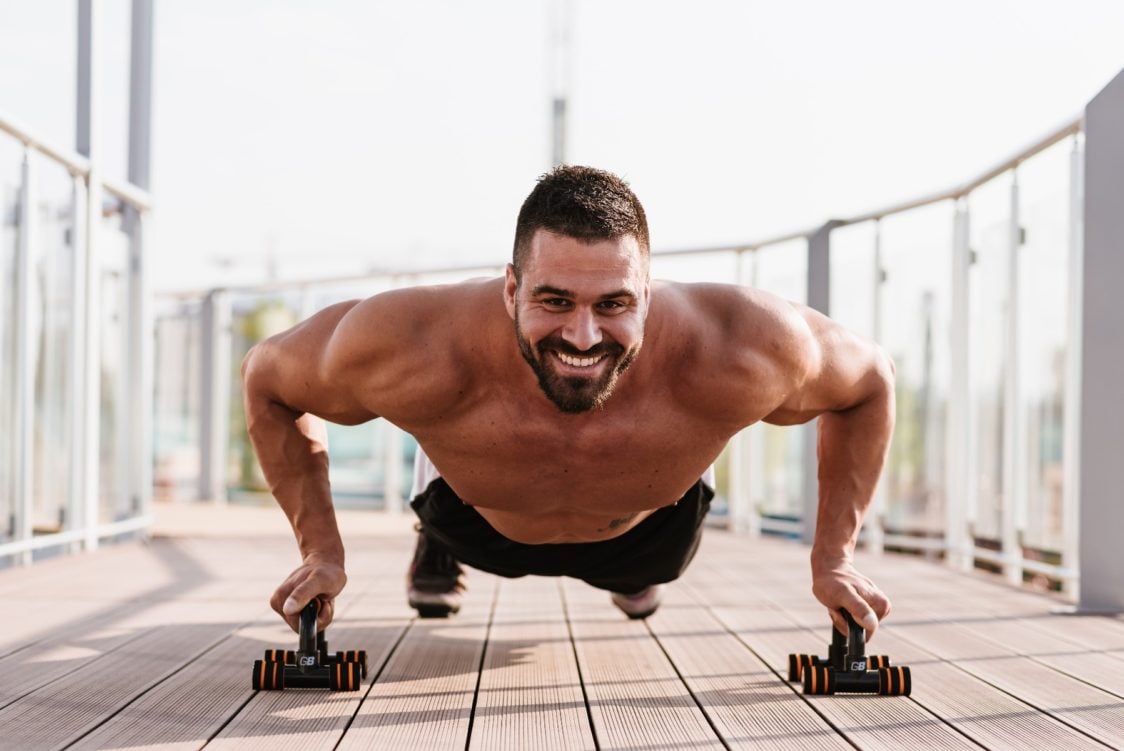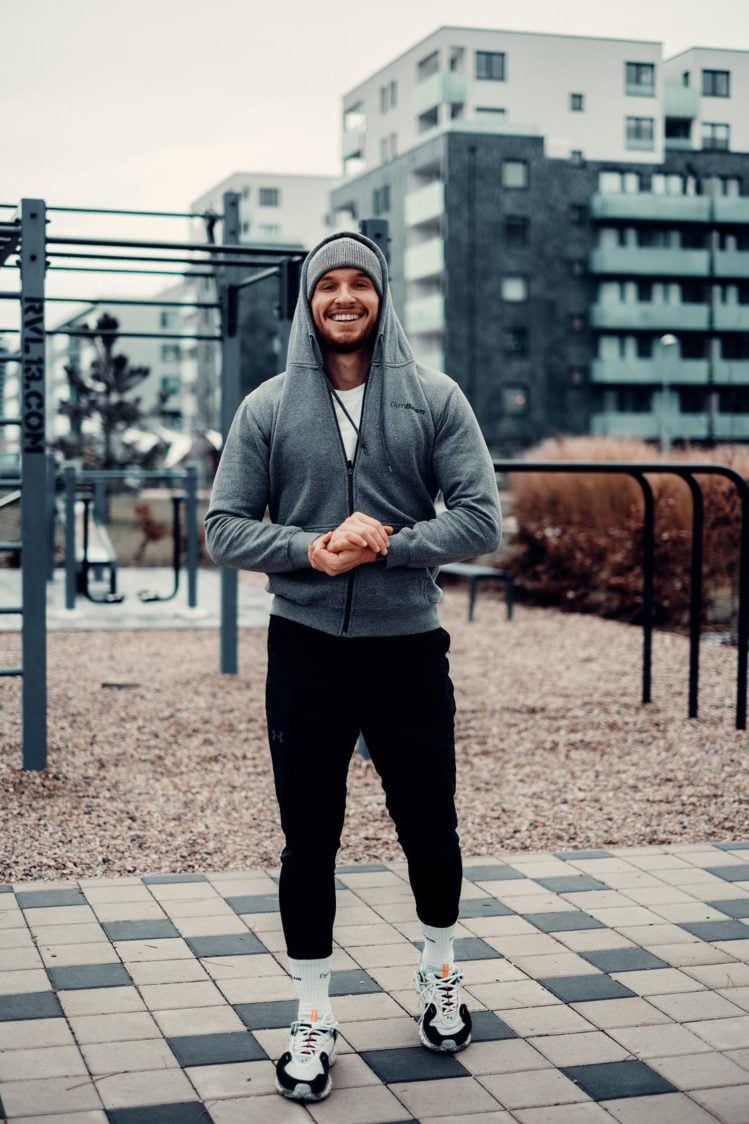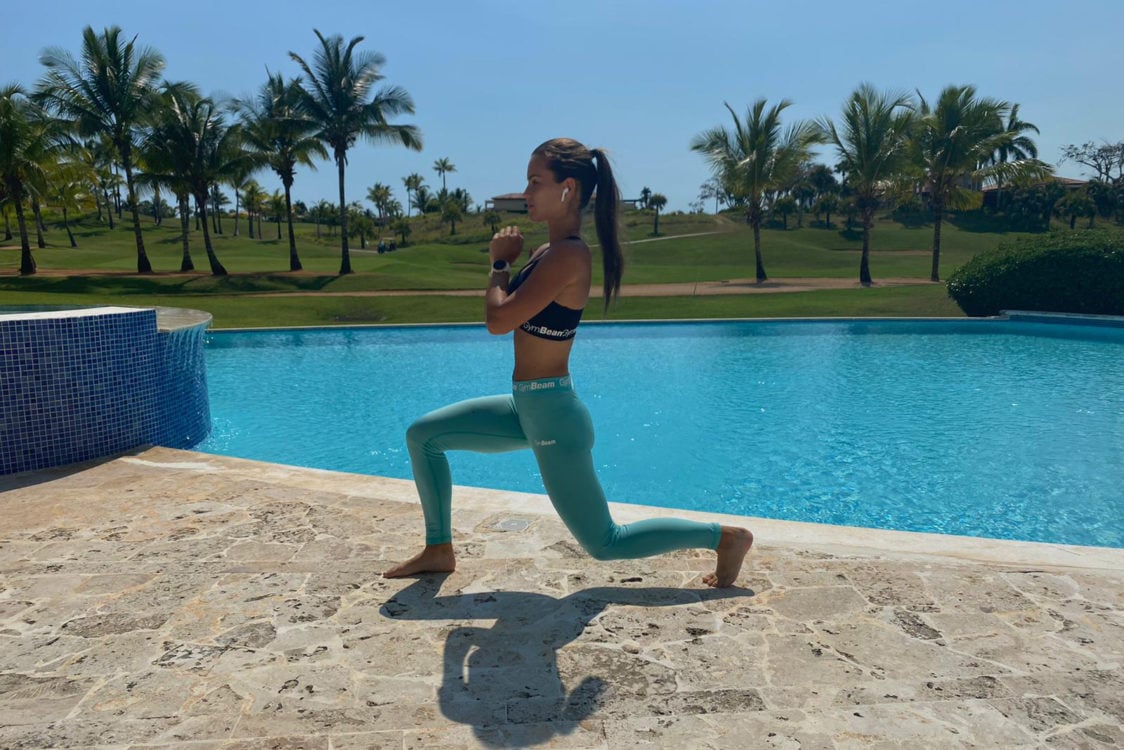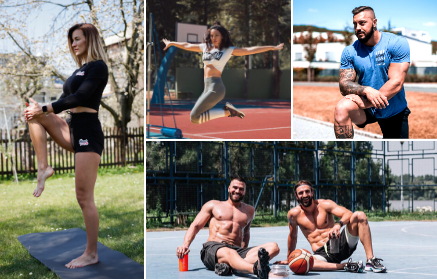Table of Contents
Do you prefer fresh air more than the gym? If you are hesitant and afraid that outdoor training is not so effective, this article is dedicated to you. You may be one of those who would like to try a change, but you don’t know how. Discover the benefits and best ways to exercise outdoors, as well as instructions for an “outdoor” training plan.
Why exercise outdoors?
We spend much of our lives indoors, especially during the winter months. Now think about how many hours a day you spend in the fresh air during the working day. If you’ve come to the “little” number, try to consider changing your training in the gym for a workout outside on a sunny day. If you’re not sure, here are just a few reasons that might convince you.
It will improve your mood
Staying outside generally has a positive effect on your mood. In addition, exercise in the fresh air improves mood and reduces depression or anger. According to researchers from the United Kingdom, 5 minutes of exercise in nature have a positive effect on a person’s mood. It will be best if you try it for yourself, try to spend at least 5 minutes walking in the park or forest on the way home from work, and watch the change in your emotions. [3] [4]

You get vitamin D
Vitamin D is obtained by the body from the sun’s rays or in the form of supplements. Its deficiency is manifested especially in the lack of sunny days, in winter or during quarantine. If you are not a fan of nutritional supplements, try spending more time outdoors, for example exercising. According to the NIH (National Institute of Health), a 5-30 minute stay in the sun between 10:00 and 15:00 at least twice a week can ensure a sufficient intake of vitamin D. Is the intake of vitamin thanks to external training a sufficient argument? Try replacing the treadmill with a walk or a run, and you also get an important vitamin for your health. [1] [2]

You will boost your self-confidence
Outdoor training can also have a positive effect on our brain, and exercise in the air stimulates all human senses in a way that indoor exercise cannot replace. Outdoor training improves self-confidence, and even staying close to water and greenery further enhances this effect. In addition, low- and medium-intensity activities are better for boosting self-confidence than high-intensity exercise. Try walking, cycling or, for example, working in the garden, you will improve not only your fitness but also your self-trust. [3] [5]
You will burn more calories

Running on a treadmill in the gym is not the same as running in the park. The change will be felt especially by your joints and ligaments, which are more burdened on the surface of the treadmill. However, you will also support calorie burning, as air resistance can increase the number of calories burned by up to 10%. It will certainly not hurt if you allow the body to move on different surfaces. It is easier to run 5 km on a treadmill than on a route in a park that rises, falls and changes terrain. In addition, outdoor training is about freedom and the choice of route at your own discretion. Are there places you don’t know in the city or haven’t visited in a long time? Come on in, and enjoy your workout more than just the number on the machine’s display. [1] [6]
It is free
Last but not least, exercise in the park and in public spaces is free. You may not realize it so much if you have a “special” card to enter the gym, and the fee is deducted from your paycheck or standing bank order. In particular, group training fees are often associated with an increased fee. The price for exercise varies depending on whether it is a regular entrance to the fitness center, guided training or exercise with a personal trainer, and prices also vary by location. 85% of Americans spend 600 euros a year on these devices and 15% even more. Training is a matter of priorities, and if you are bothered by the smell of sweat, waiting for machines or other factors typical for a gym, exchange it for outdoor exercise. You can invest the money saved for fees in better sneakers, for example. It is not always possible to train outdoors, rain, heat or frost are probably not ideal for exercise, but at least you can alternate it. During the rain go to the gym and use the better weather for outdoor exercise. [6] [7]
How to exercise outdoors?
Outdoor training has several benefits and is a great alternative to fitness centers. You need to find a system in it, just like in a classic fitness exercise. By training outdoors, you can lose excess pounds, gain muscle mass and improve your condition. In this chapter we will give you some tips on outdoor exercises that will help you get into the shape. Some exercises require equipment, while for others you can use freely accessible objects in parks and public places.
Running
Running is one of the most popular forms of training, because you do not need much equipment and there are many variants, thanks to which you can get in shape.

By running you strengthen your joints and bones, it is a great aerobic exercise that will help you reduce and maintain optimal weight, and moreover it will improve your mood. [8]
There are several basic types of running [9] [10] [11] [12]:
- Classical running – this is the most common type of short or medium distance running. It is important that it is performed regularly and at a natural pace. During a classic run, maintain a mild and natural pace, during which you can, for example, communicate with a training partner. Also, keep in mind the correct shape while running, your arms moving only slightly, and your shoulders, neck and back should be relaxed. Regularly running this type will improve your aerobic capacity.
- Progressive running – its difficulty is between classic and interval running. Its essence is to start running at natural speed and end running at a faster pace. This type is often associated with long-distance running, the goal is regular acceleration and every kilometer of the route should be slightly faster.
- Long-distance running – it is basically a longer variant of classic running and its goal is to improve your endurance. Duration and distance depend on your condition and endurance. If running on long distances seems too boring, you can make it special by changing the pace and intervals. The correct length of the long run should be 20-30% of the weekly distance run. For example, if you run 30 km in a week, a long run should be about 6-10 km.
- Uphill running – running uphill itself has several forms, such as sprinting. This is an example of HIIT training, the advantage of which is the significant burning of calories in a short time. This improves endurance, strength and running technique. You can also run in the form of repeats (hill repeats), these are short sections during the run uphill. Repetition is best done on a hill with a slight incline from 4 to 6%. Another form is hill circuits, which you can do on a route with different hills and different types of terrain. Find a route with alternating steep and slight incline, speed up on the incline, hold your tempo on the straightaway and slow down on declines.
- Fartlek – a type of run whose name comes from Swedish and denotes “speed game”. The difference between classic forms of running, such as interval and fartlek, is that fartlek is unstructured. Due to this feature, it mixes several different intervals with different distances and durations. The essence is the alternation of fast and short with slower, more relaxed sections. You determine their length and intensity during the run, you sprint to the nearest tree, you rest after the next sidewalk, and so on. Fartlek is great for group running, where the group leader sets the pace. It’s not only fun, but also motivating.
You might be interested in these products:
Park – an ideal outdoor gym
Do you live near a park with trees, benches, or tools for outdoor training? Make the park between the appartment buildings your own gym and use its components. Whether you want to train specific parts or the whole body, get to know the exercises that you can playfully master using a bench or trees.
1. Push-ups
You can make push-ups in several places and customize them to your liking. You can train your back, biceps, triceps and shoulders perfectly with them. Try benches, walls, stairs or just the ground. If you do not want to do cranks directly on the ground, a railing will also serve you perfectly, strengthen your abdomen and do, for example, 20 repetitions in a series. [13] [14]
2. Bench dip
Dip is a great exercise, especially for triceps, but it also involves the shoulders. There are several options for a dip and one of them is with the help of a bench. Sit on a bench and hold it with your hands next to your body. Move your butt forward and hold on firmly with your hands. Bend your shoulders and lower your upper body to the ground. You may find the exercise simple, but try it, you will practice triceps and shoulders with it. Do you want the exercise to be more challenging? Try a dip with a kick (Dip and Kick), in addition to the classic hand movement during the dip, you also have to kick, which also involves your legs and abdomen. [13] [14]
3. Plank
Plank is an exercise for which you do not need much equipment, just enough space for you to lie down on the ground. Whether you are doing a plank on your elbows or your hands, the most important thing is technique. Put yourself in a position similar to push-ups, place your elbows under your shoulders, try to keep your body level, and especially your buttocks. Plank strengthens your whole body and during the exercise you can definitely feel the work of muscles around the hips and lower back. If you shake in the last moments, you’re doing well. [15] Want to know the benefits of plank? Read our article – What happens to you when you do a plank everyday.
In addition, the plank does not have to be boredom associated with counting down the seconds. You can vary it and experiment with 47 variations of this exercise. Get to know them in the article – 47 best and insanely fun variations of planking.
4. Pull ups
Pull ups on the bar are among the key exercises for a muscular back. In some parks you will find an outdoor gym with a bar, but you can exercise without it. All you need is a solid rod of sufficient height or a stable tree branch. Grasp the rod with your hands approximately shoulder-width apart and just pull yourself up. It is advisable to make 10 pull-ups in one series, which is not easy for beginners. Therefore, if you can’t do 10, do as much as you can, and do one less in the next series. [15] [16]

5. Step-up
You don’t need many machines and tools from the gym for proper leg training, you can train them with any elevated segment in the park. If you want to properly practice your quadriceps, hamstrings and butt, try step-up. Stand in front of an elevated surface, such as stairs, step up with your left foot and lift your right foot behind you. Take a step back and do a leg-changing exercise. Step-up can have many variants with which you can perfectly train the muscles of the lower body. One of them is step right up, when putting the foot up, keep your arms firm and when lifting the other foot to the side, lift the arms to the position of the letter “T”. There are many ways to use stairs to train your leg muscles. You can strengthen quadriceps and hamstrings, for example, by jumping up stairs. Jumps are a great exercise to improve body stability, but you need to be careful to safely fall down on the ground. When jumping, try not to fall with very high force and absorb the impact with your whole body. There are several possibilities for jumps, it definitely depends on the environment and your form. [13] [14]

6. Jumping on the skipping rope
Are you looking for a leg training exercise that will make you sweat well? The skipping rope is not only a children’s toy, in addition to strengthening your fitness, you can also train the muscles of the lower part of the body with it. Try to include it in the training plan and try several variants that can be tried with a skipping rope. In addition to classic jumping, you can jump on one leg, raise your knees when jumping or cross your legs or arms while jumping. If you are a beginner, engage variants only after mastering the classic jumping, to avoid potential injuries. [11]
7. Lunges
As you may have noticed, you can train all the exercises with your own weight outdoors. If we are talking about proper leg training, we must not forget the lunges. They are simple, you can try several variants, and you can practice quadriceps, hamstrings and buttocks with them. The basic movement in a static lunge is through one leg, which you step forward so that both knees bend at an angle of approximately 90 °. You can also try walking lunges, jump lunges or reverse lunges in which you take a step back. If you have a bench nearby, try the Bulgarian Split Lunge, for example, to practice quadriceps and buttocks. Place one of the legs with the instep down on the bench seat, the other in front of you at a 90 ° angle, and move down from this position. Lunges can be done anywhere, you can make them more challenging by using weights or changing the pace. It is important that you enjoy it as well as serve its purpose. [14] [18]

8. Squats
Squats are one of the basic exercises aimed at training the muscles of the lower body. Their added value is also to improve the stability and strength of the center of the body. I guess we all learned squats in elementary school, but it’s a technically demanding exercise, so we need to pay attention to its proper implementation. Thus, the movement should be similar to sitting, not bending at the knees. Your buttocks should point backwards and you should feel the weight shift to your heels. You should look in front of you and have your shoulders relaxed while squatting. You need to keep your back stretched, but if your outstretched hands fall on your knees while squatting, it is a sign that you have a bent back. The knees should go slightly out when squatting and the the knee caps should be in the same direction as the toes. Last but not least, you should keep your feet on the ground while squatting and bounce off the heels when moving up. Squats are also among the exercises with several variants, for example well-known sumo squats, in which you have your legs in a wider position than your hips and your toes are turned slightly outwards. [13] [19]
Want to know more about squats and lunges? Read our article – How to do squats and lunges properly? You will learn about the correct technique of squats and lunges, as well as different types of these exercises.
We believe that we have inspired you by choosing a few exercises and reduced your worries about training outside. There are many training options and you can combine them at your own discretion and fitness goals.
How to prepare yourself for outdoor training?
In order for the training to make sense and bring results, you need to create a system in it. A training plan is not only useful when exercising in a gym. Its preparation depends on your fitness and your fitness goals. We will at least briefly introduce you a few factors that need to be considered when planning your workout outdoors.
Outdoor training requires thinking of several factors in the first place, before the exercise itself [17]:

- Appropriate weather – if you are going to train in the park at the opposite end of town, it is not a good idea to check if your plans will not be hindered by bad weather. A sunny day during the preparation for training does not mean that the situation cannot change in a few minutes. To be sure, it is definitely useful to check the weather in the weather forecast. In addition to the weather, the effectiveness of the training can be affected by other factors, such as strong winds, smog levels or humidity.
- Adequate clothing – you have checked the weather, so it is important to prepare suitable clothing. If there is a risk of rain, it will not hurt to wear waterproof clothing. In cold weather, it is good to wear more layers of clothes, which you can add or remove when the temperature changes. With heat, there are problems with high temperatures and sweat, so choose clothes of lighter colors and materials that wick sweat away from the body.
- Ideal location – if you do not have an ideal location in your area, try to find at least the most suitable one. The choice of place to exercise depends on the type of training you have chosen. Always think of a place that has a suitable surroundings for selected exercises and activities. For example, if you want to practice yoga, it is not entirely appropriate to go to the playground with a bunch of screaming children. The ideal option is a place where you can train without any problems, and where you do not restrict other people with your training, and others do not limit you.
- Safety– be sure to choose a place for training that is suitable and safe at the same time. However, there is still a certain risk of exercise, such as injury or other dangerous situations. Therefore, have a phone with you and tell someone you know where you are going to train (for example, if you are going to run to a more distant forest). It does not hurt to have a small amount of money with you, in case you would like to buy water or an energy bar during training.
If you already have a training plan that you follow when exercising in a gym, try to find alternatives suitable for training outdoors. If you have never compiled a training plan or are looking for inspiration for a new and better one, read our article – How to compile a quality training plan – tips, trainings, the most common mistakes. You will find in it all the necessary information to create a plan that suits you the best.
Outdoor training is a pleasant alternative to training, especially during sunny days. It has several advantages, so there is no need to worry that you will not exercise as well as in a gym. It comes with a certain freedom in choosing a place and activities, so come and practice outside, there will be plenty of rainy days. Do you want your friends and acquaintances to learn about the benefits and ways of outdoor training? Feel free to support the article by sharing.
[1] Scarlett Wrench – 14 Reasons to Do a Workout Outdoors Today – https://www.menshealth.com/uk/fitness/a756705/training-outdoors/
[2] Vitamin D – https://ods.od.nih.gov/factsheets/VitaminD-HealthProfessional/
[3] Kelsey Graham – Get Out! 5 Benefits of Outdoor Exercise – https://www.acefitness.org/education-and-resources/lifestyle/blog/6360/get-out-5-benefits-of-outdoor-exercise/
[4] Exercise and mood – https://www.betterhealth.vic.gov.au/health/HealthyLiving/exercise-and-mood
[5] Holly St. Lifer – 7 Reasons to Sweat Outdoors – https://www.webmd.com/fitness-exercise/features/7-reasons-to-sweat-outdoors#2
[6] Cristina Goyanes – Take Your Workout Outside! – https://www.womenshealthmag.com/fitness/a19958597/outdoor-fitness/
[7] Vera Tweed – 9 Reasons to Train Outdoors – https://www.betternutrition.com/fitness/fitness-outdoor-training
[8] Jennifer Van Allen – 6 Science-Backed Ways Running Improves Your Health – https://www.runnersworld.com/beginner/a20847956/6-ways-running-improves-your-health-0/
[9] Running 101: The 8 Basic Types of Runs – https://www.podiumrunner.com/training/running-101-the-8-basic-types-of-runs/
[10] Emma Knudson – What Are the Different Types of Runs? – https://trailandsummit.com/what-are-the-different-types-of-runs/
[11] Mark Barroso – 10 Best Outdoor Workouts to Burn Fat and Build Muscle – https://www.mensjournal.com/health-fitness/10-best-outdoor-workouts-burn-fat-and-build-muscle/
[12] Jenny Hadfield – What’s the Difference Between Fartlek, Tempo, and Interval Runs? – https://www.runnersworld.com/training/a20852351/whats-the-difference-between-fartlek-tempo-and-interval-runs/
[13] Jessica Smith and Betsy Stephens – The Best Outdoor Workouts to Mix Up Your Routine – https://www.shape.com/fitness/workouts/10-new-outdoor-workout-ideas
[14] Asia Bradlee – 20 Exercises You Can Do in a Park – https://www.bostonmagazine.com/health/2015/05/29/park-exercises/
[15] Edward Lane – 15-minute outdoor workout – https://www.menshealth.com/uk/building-muscle/g749844/15-minute-outdoor-workout/
[16] Zach Even-Esh – The Ultimate Park Workout: How to Turn the Outdoors Into a Gym – https://www.mensjournal.com/health-fitness/the-great-outdoors-workout-routine/
[17] Laura Williams – How to Plan an Outdoor Workout – https://www.verywellfit.com/plan-an-outdoor-workout-4163820
[18] Brittany Smith – The 13 Best Lunge Variations – https://www.mensjournal.com/health-fitness/15-best-lunge-variations/
[19] Hana Medvesek – SQUATS: WHAT PROPER SQUATS LOOK LIKE & WHICH MUSCLES THEY WORK – https://www.runtastic.com/blog/en/squat-4-common-squat-mistakes-avoid/


Add a comment